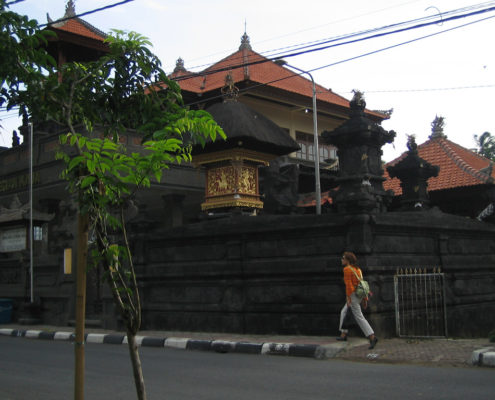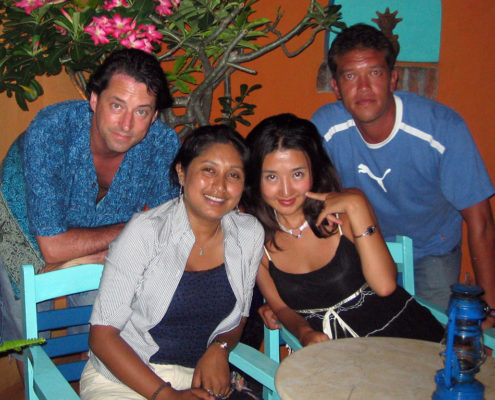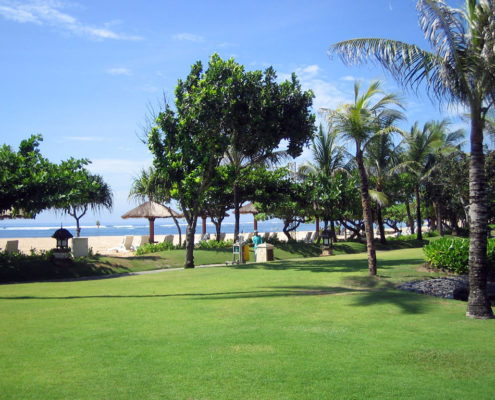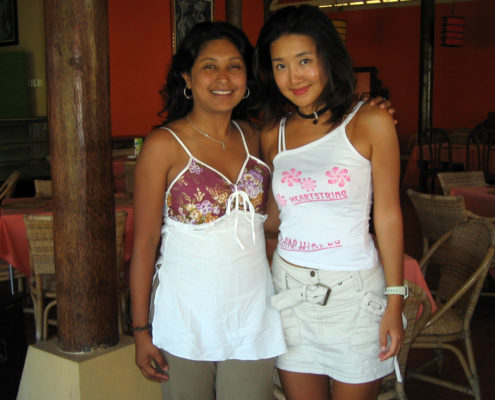Personal Experiences in Bali
My Eat, Pray, Love, Moments
Unlike my usually power-packed schedules, my trip to Bali was on a travel invitation. My friend, artist and poet, Steve Koons and his family friends Reef Addison his wife, Soo-Yun Park (who were also my hosts) had invited me over to explore a brochure-free trip in Bali. It would be a cultural and learning experience, of a place, I had closely observed and been enchanted with. What’s not to like?!
As planned, I embarked on my Eat Pray Love journey to Bali on 22 to 26 February 2007. Just as I imagined, Bali made me feel at home. My hosts were of a mixed cultural background – a combination of Korean, Japanese and American. Their camaraderie immediately struck me as the true reflection of Bali – a culture of harmony. I was in for a beautiful adventure. For the first time, I was travelling without a roadmap or even a proper itinerary. Reef, the holiday planner, had however made a nice list of must-see spots for me to experience the uniqueness of Bali. I strolled through the streets that somehow resembled those of Paris and explored the spiritual tranquillity of the place. I suppose Steve had chosen to live in Bali because it enhanced his artist’s soul.
You can see that in the profound sense of aesthetics of the people, in the way they decorate their gateways, carve their temples, do wood carving or mask making. Religious as they are, Balinese women prepare offerings to various gods in the household shrines and also make elaborate presentations of flowers and food at the temples. People pray together in feasts before statues made of sandalwood, gold and even coins tied together. It’s a deeply reverent atmosphere.
It is also reminiscent of the colourful Hindu culture of India. Hinduism had, in fact, come to Bali about eight centuries ago. It was later merged with the traditional beliefs of worshipping ancestors and natural spirits like mountains and streams. But I guess the initial impact still remains. Bali even has a strong Buddhist influence, but the unanimous belief remains that the island belongs to one supreme God. Legends even say that Bali was once considered a flat and barren island and that Hindu Gods had descended upon it and created mountains.
But despite such mythological undertone and a whiff of yesterday, Bali has all modern facilities. It further foiled my notion about Bali to be a place, plagued by religious and political conflicts, affecting the economy of the island. Instead, I noticed that for all its essentially rural appeal, Bali doesn’t fall short of providing the basic modern day requirements for a traveller/tourist or local – be it in the use of Internet, the luxury resorts, the inviting beaches, the wellness centres or even the adventure sports, akin to the land.
Nothing unnatural
Everything about Bali is truly natural. Its economy also thrives on its natural resources, the sea, being its biggest supplier. From fishes to the shells that can make toys and tourist souvenirs, the sea provides all. Besides that, Bali also farms pigs and poultry, as well as coconuts, sugarcane, fruits, vegetables, coffee and rice. Rice is, in fact, the staple food. I remember having a rice preparation, made with pepper and peanuts, which was very spicy.
The Balinese tourism industry has picked up strongly in the last few years. What is unique about Bali is that though it is a tourist destination, it doesn’t encourage commercial exploitation or endangering the environment.
Apart from its beaches where locals and tourists throng together, Bali is also famous for its traditional massage, which is quite similar to the Khasi massage in Meghalaya. Another popular tourist item is the handmade Balinese lace. With its extraordinary style and texture, these beautiful pieces are used in costumes and temple ceremonies. Lace weaving in Bali – a tradition of weaving lace by foot, bamboo looms and by hand – can be traced back to the 1930s in Uluwatu. Electric and computer-guided machines now produce most laces available in the world, even in Indonesia. But the original Uluwatu lace is special because it takes five days to hand-weave a single piece of lace and the workmanship is very fine and neat. I’m glad that Soo-Yun took me to a wonderful lace making outlet. Thanks to her, I now own a pretty Balinese lace outfit.
An embracing culture
The warmest feature of Bali, however, is its people. Despite a massive influx of immigrants from different places of the world into Bali, the people have remained as cordial and friendly as ever. Even if you are new to the place, the warmth of the place and the people will totally make you feel safe and secure. You can roam around – visiting interesting, historical places or go shopping – and all you will receive everywhere are smiles.
This could perhaps be because they so highly prize their soul. Even the work culture of the people is reflective of their spiritual nature. Its steady, slow pace seems to elude most problems that exist in places with a torrentially faster stride. It seems that the Balinese essentially want to live a life of purity and ensure that their life’s deeds be fruitful in scoring a peaceful afterlife.
The most important duty of any Balinese person, therefore, is to perform and complete the cremation rights and rituals; which are rather elaborate. Instead of mourning, dances and shadow plays are performed on the eve of the cremation – the occasion when the soul is completely free from the body.
All this left a great impression on me. I felt the similarity of Bali and my own Meghalaya in their belief of camaraderie between different cultural backgrounds and food habits, without conflict.
The trip was even more special because I was not hard pressed for time and could take in the sights and sounds with more élan. I will always cherish the Balinese spirit of living and its inclusiveness of all kinds of people and nationalities under its one loving umbrella.
I will also cherish the vision of the blue sea, gently lapping its waters, rendering a soul-cleansing experience!




